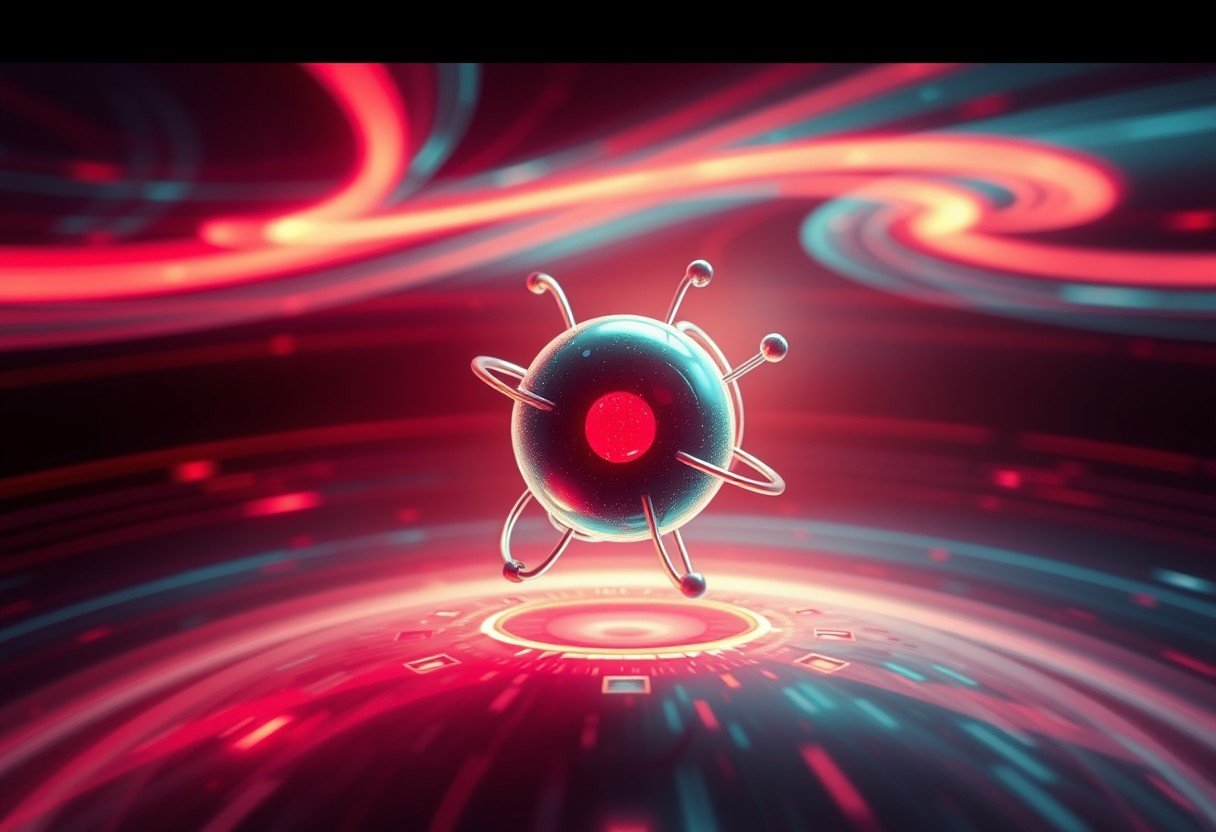Stars are not all the same. A star’s mass at birth decides its entire life story, from how brightly it shines to how it dies. This single property creates a vast difference between long-lived stars, which burn slowly for billions of years, and short-lived stars, which live fast and die young in spectacular explosions. Understanding these differences helps us piece together how the universe builds everything from new stars to planets and even life itself.
It All Starts with Mass and Lifespan
The most fundamental difference between stars is the relationship between their mass and how long they live. It’s a simple but powerful rule: the more massive a star is, the shorter its lifespan.
Long-lived stars, like red dwarfs, are the marathon runners of the cosmos. They have very low mass, sometimes as little as 8% of our sun’s mass. Because of this, the gravitational pressure in their cores is lower, causing them to burn their hydrogen fuel incredibly slowly. This slow and steady fusion allows them to shine for billions, or even trillions, of years.
In stark contrast, short-lived stars are the sprinters. These massive stars, like blue giants, can be more than ten times the mass of our sun. This immense mass creates extreme pressure and temperature in their cores, causing them to burn through their nuclear fuel at a furious rate. Consequently, their lives last for only a few million years, a mere blink of an eye on a cosmic timescale.
A Tale of Two Temperatures and Luminosities
The physical properties of these two types of stars are worlds apart. A star’s mass directly influences its temperature, color, and brightness.
Long-lived stars are characterized by their lower temperatures and dimmer light. With surface temperatures often below 4,000 Kelvin, they glow with a reddish hue. Their low mass means they produce far less energy, making them much less luminous than their larger cousins.
Short-lived stars are the complete opposite. They are incredibly hot and luminous. Their massive size and rapid fusion rates generate enormous amounts of energy, leading to brilliant blue or white light and surface temperatures that can exceed 30,000 Kelvin. Their intense brightness makes them visible across vast interstellar distances, even though they exist for only a short time. This high energy output also means they have a profound effect on any nearby planetary systems.
The Divergent Paths of Stellar Evolution
Because of their differences in mass and fuel consumption, long-lived and short-lived stars follow very different evolutionary paths. Their life cycles are as distinct as their physical properties.
A long-lived star enjoys a slow and stable existence. It will spend the vast majority of its life in the main sequence phase, steadily converting hydrogen into helium. This phase can last for tens of billions of years. After it exhausts its core hydrogen, it will gradually expand into a red giant, a process that is relatively calm compared to the evolution of more massive stars.
The life of a short-lived star is turbulent and swift. It races through its main sequence phase in just a few million years before swelling into a massive red supergiant. Its internal structure changes rapidly as it begins fusing heavier and heavier elements in a desperate fight against gravitational collapse.
Forging the Elements of the Universe
Stars are the universe’s element factories, a process known as stellar nucleosynthesis. However, the types of elements they create depend heavily on their lifespan and mass.
Long-lived stars are modest element producers. Throughout their long lives, they primarily fuse hydrogen into helium. As they age and become red giants, they can begin fusing helium into heavier elements like carbon and oxygen. They contribute these lighter elements to the cosmos gradually when they die.
Short-lived stars, on the other hand, are responsible for creating the vast majority of heavy elements in the universe. Their extreme core temperatures and pressures allow them to perform a sequence of fusion reactions.
- They start by burning hydrogen, then helium, carbon, and oxygen.
- This process continues, creating progressively heavier elements like neon, magnesium, and silicon.
- This chain of fusion stops when the core is converted to iron, as fusing iron consumes energy rather than releasing it.
This creation of an iron core is what sets the stage for the star’s violent death.
A Star’s Grand Finale: Quiet Fade or Cosmic Explosion
The end of a star’s life is its most dramatic chapter, and the final scene is determined entirely by its initial mass. Long-lived stars fade away peacefully, while short-lived stars go out in a blaze of glory. The table below summarizes their ultimate fates.
| Stellar Type | End-of-Life Scenario |
|---|---|
| Long-lived Stars | Gradually exhaust their fuel, expand into red giants, shed their outer layers, and leave behind a dense white dwarf. |
| Short-lived Stars | Rapidly fuse elements up to iron, suffer a core collapse, and explode as a supernova, leaving behind a neutron star or a black hole. |
The supernova explosions of short-lived stars are among the most energetic events in the universe. These cataclysmic blasts are responsible for scattering all the heavy elements forged within the star across the galaxy.
Shaping Galaxies and Seeding Life
Both types of stars play a crucial role in the evolution of galaxies, but in very different ways. Their life cycles and deaths directly impact the chemical composition of the cosmos.
Long-lived stars provide a stable, long-term source of energy. Their slow enrichment of the interstellar medium with lighter elements like carbon and oxygen happens over immense timescales.
Short-lived stars have a much more immediate and profound impact. When a massive star explodes as a supernova, it seeds the surrounding space with heavy elements like gold, platinum, and uranium. This ejected material mixes with interstellar gas clouds, providing the raw materials needed for the next generation of stars and planets. The elements that make up our planet, and even our own bodies, were created inside these massive, short-lived stars billions of years ago.
Frequently Asked Questions
What is the main factor that determines a star’s lifespan?
A star’s mass is the single most important factor. Stars with less mass have longer lifespans because they burn their nuclear fuel much more slowly, while more massive stars burn their fuel very quickly and have much shorter lives.
Why are massive stars so much brighter than smaller stars?
Massive stars are brighter because their immense gravitational force creates incredibly high pressure and temperature in their cores. This leads to a much faster rate of nuclear fusion, which releases a tremendous amount of energy and light.
What happens when a long-lived star like our sun dies?
When a star like our sun runs out of fuel, it will shed its outer layers to form a beautiful structure called a planetary nebula. The hot, dense core of the star, known as a white dwarf, will be left behind to slowly cool over billions of years.
How do short-lived stars create heavy elements like gold?
Elements heavier than iron, such as gold and uranium, are not created during a star’s normal life. They are forged in the intense heat and pressure of a supernova explosion, which occurs when a massive, short-lived star dies.
Are we really made of stardust?
Yes, almost every element in your body heavier than hydrogen and helium was created inside a star. The carbon, oxygen, nitrogen, and other elements essential for life were forged in stars and scattered across the galaxy by stellar winds and supernova explosions.








Leave a Comment